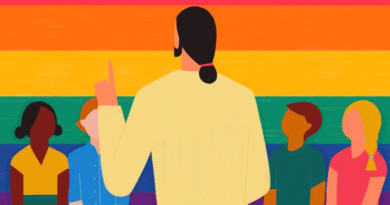Trump’s Effect: What His Win Means for Women and the LGBTQIA+ Community
Picture via Google
As we gear up for the political rollercoaster that is the 2024 presidential election, the return of Donald Trump to the political forefront has ignited a whirlwind of discussions about its implications for various communities. Women and the LGBTQIA+ community, in particular, find themselves at the crossroads of concern and determination. The stakes are high with a Republican-majority Senate poised to back his agenda. What could a second Trump term bring? Let’s dive into this critical conversation to unpack challenges, spotlight opportunities, and celebrate the strength of these communities in the face of adversity.
A Look Back at Trump’s Policies
During Trump’s initial presidency, his administration made sweeping changes that left many marginalized communities grappling with uncertainty. Protections for transgender individuals were rolled back, including banning them from serving in the military. The Department of Health and Human Services revised regulations that removed explicit protections for LGBTQIA+ individuals in healthcare. Similarly, women faced threats to their rights, particularly with efforts to defund Planned Parenthood and the strategic appointment of conservative judges intent on overturning landmark rulings like Roe v. Wade.
The consequences of these policies were immediate and far-reaching, particularly for women’s reproductive rights. In 2022, the Supreme Court’s decision to overturn Roe v. Wade signaled a grim turn in the fight for bodily autonomy. The ruling emboldened anti-abortion movements nationwide, leaving millions of women vulnerable to restrictive state laws that limit access to healthcare.
However, history also tells a story of resistance. The Women’s March became a global phenomenon, mobilizing millions to advocate for gender equality and reproductive rights. Similarly, LGBTQIA+ advocates intensified their efforts, using grassroots organizing and legal battles to challenge these regressions. These movements remind us that even in the face of adversity, communities have the power to rally, adapt, and fight for justice.
Women’s Rights in Focus
For women, a second Trump presidency could exacerbate existing concerns. Reproductive rights remain a central issue, particularly following the erosion of Roe v. Wade. Trump’s rhetoric and the appointment of conservative judges have heightened anxieties about further rollbacks on workplace equality, healthcare access, and education policies.
Yet adversity often fuels activism. Women’s rights organizations have evolved, embracing digital platforms and grassroots strategies to amplify their causes. The younger generation, in particular, has found its political voice, demanding representation and policy changes. Social media has become a powerful tool, allowing women to organize protests, share resources, and build solidarity across borders.
The Women’s March, which emerged in response to Trump’s 2016 election, could experience a resurgence, reigniting debates and rallying communities around key issues. Younger activists are taking the reins, ensuring that feminism continues to evolve and address intersectional concerns, including those faced by women of color and economically disadvantaged groups.
This moment presents an opportunity for women’s rights movements to not only resist harmful policies but also redefine their vision for equality. By leveraging the momentum of past victories, they can craft a more inclusive, innovative approach to advocacy.
LGBTQIA+ Rights at Risk
The LGBTQIA+ community also faces significant risks under a potential second Trump term. His administration’s track record includes removing anti-discrimination protections in housing and education, as well as attempting to narrow the definition of gender in federal policy. Activists fear that his return could threaten landmark decisions like Obergefell v. Hodges, which legalized same-sex marriage nationwide.
However, this community has long demonstrated resilience in the face of adversity. The rollback of rights has often galvanized LGBTQIA+ advocates, who have used adversity as a rallying cry for action. Organizations like GLAAD and the Human Rights Campaign have redoubled their efforts to safeguard existing protections and push for new ones.
Corporate allies, too, have stepped up in recent years. Companies that were once hesitant to publicly support LGBTQIA+ rights now use their platforms to advocate for inclusivity, signaling that regressive policies may have economic consequences. Cultural representation in media, from films to social media influencers, also plays a pivotal role in shifting public perceptions and fostering empathy.
The fight for equality is far from over, but the LGBTQIA+ community has proven time and again that it can turn setbacks into opportunities for growth and unity.
The Hidden Battle: Intersectionality
Amid the broader challenges, the intersectional impact on marginalized groups cannot be overlooked. Women and LGBTQIA+ individuals of color often face compounded discrimination due to race, economic status, and systemic inequality. Policies that limit access to healthcare, education, or housing disproportionately harm these individuals, entrenching cycles of disadvantage.
Advocacy groups are increasingly adopting intersectional approaches, recognizing that solutions must address the unique challenges faced by those at the crossroads of multiple identities. This shift reflects a deeper commitment to inclusivity, ensuring that no one is left behind in the fight for justice.
Resistance Through Culture
Beyond politics, cultural activism has emerged as a powerful tool for resistance. During Trump’s first term, art, storytelling, and media became vital platforms for marginalized voices. Films like Moonlight and shows like Pose brought LGBTQIA+ experiences to mainstream audiences, fostering empathy and understanding.
Social media platforms like TikTok and Instagram are now brimming with feminist and LGBTQIA+ creators who use their influence to educate, inspire, and rally communities. By shaping public perception and encouraging dialogue, cultural movements often pave the way for lasting social change.
This cultural shift underscores the importance of representation. Seeing diverse stories and identities celebrated in the media empowers individuals and challenges societal norms, making the fight for equality more relatable and urgent.
Turning Fear Into Fuel
While Trump’s rhetoric and policies may instill fear, they also have the unintended effect of galvanizing resistance. The Women’s March is a prime example of how fear can transform into action, uniting millions under a shared vision for equality. Similarly, the LGBTQIA+ community has consistently turned adversity into motivation, mobilizing efforts to protect their rights and build solidarity.
Grassroots movements are amplifying their reach like never before, thanks to digital tools that enable global connections. Whether through viral campaigns, local rallies, or global petitions, these efforts prove that adversity can be a catalyst for innovation and unity.
Conclusion: A Future Worth Fighting For
Despite the uncertainty surrounding a potential second Trump term, one thing is clear: the determination of women and LGBTQIA+ communities to fight for their rights remains unshaken. These groups have weathered political storms before, and their resilience continues to inspire progress.
The stakes are undeniably high, but so is the potential for meaningful change. By turning challenges into opportunities, building solidarity across communities, and harnessing the power of culture and activism, the fight for equality marches forward.
This moment is more than a test of resilience, it’s a call to action. It’s a chance for communities to come together, redefine what progress looks like, and ensure that the future is one of inclusion, empathy, and justice. In the face of adversity, these movements remind us of a simple truth: progress is always worth the struggle.
Work Cited:
- Fact Sheet: Donald Trump on LGBTQ Issues: the Economy, Jobs, and Housing | GLAAD
- Compare Trump and Harris’ views on LGBTQ rights and marriage equality – CBS News
- What Trump’s Win Means for LGBTQ+ Rights | TIME
- How a second Trump presidency could impact the LGBTQ+ community | PBS News
- Women’s March – Our Feminist Future – Women’s March



